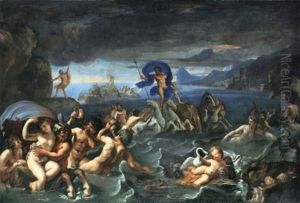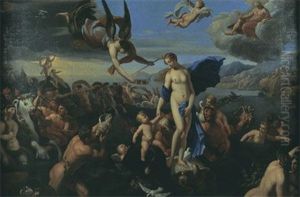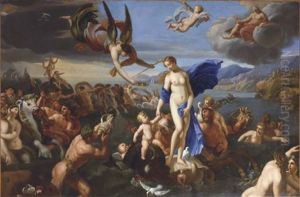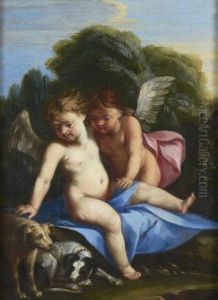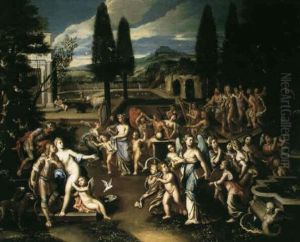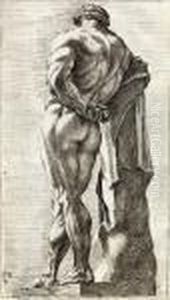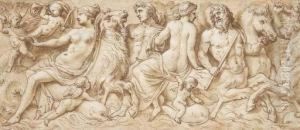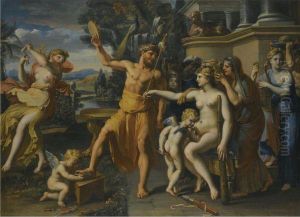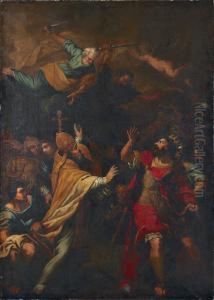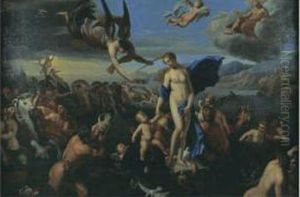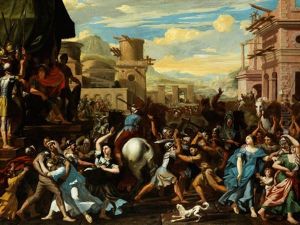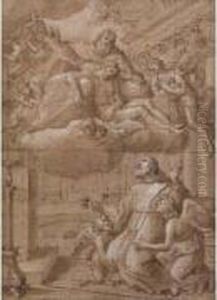Francois Perrier Le Bourguignon Paintings
François Perrier, surnamed Le Bourguignon, was a French Baroque painter and engraver born in 1590 in the Burgundy region of France. Not much is known about his early life and training, but it is believed that he traveled to Rome at a young age to study art. Rome was a center for artistic activity during this period, attracting artists from all over Europe who wished to study the antique and the works of the Renaissance masters.
Perrier’s work in Rome involved painting, but he is particularly noted for his engravings of classical sculptures and his interest in antiquity, which was common among artists of his time. His series of engravings titled 'Segmenta nobilium signorum et statuarum', published in 1638, depicted a variety of ancient Roman statues and was intended as a resource for artists. These engravings were widely disseminated and used as a reference for classical forms by artists long after his death.
In addition to his interest in antiquity, Perrier was influenced by the dramatic style of Baroque art that was prominent in the 17th century. His works are characterized by their dynamic compositions, strong contrasts of light and dark, and a sense of movement that is typical of the Baroque aesthetic.
After his time in Rome, Perrier returned to France, where he continued to work and received commissions from the French court. He became a member of the Royal Academy of Painting and Sculpture and contributed to the development of French art during the reign of Louis XIII. His influence extended beyond his own works through his role as a teacher; he educated and influenced a number of younger French artists, helping to disseminate the Baroque style throughout France.
Perrier passed away in 1650 in Paris, leaving behind a legacy that includes his paintings, his influential engravings of classical statuary, and his contributions to the French artistic community. Although not as well-known today as some of his contemporaries, Perrier was an important figure in the transmission of Italian Baroque influences into French art, and his works continue to be studied for their representation of 17th-century art and aesthetics.








